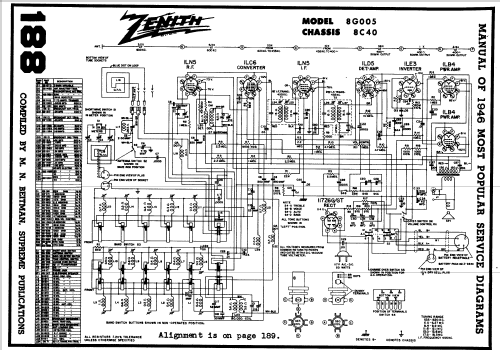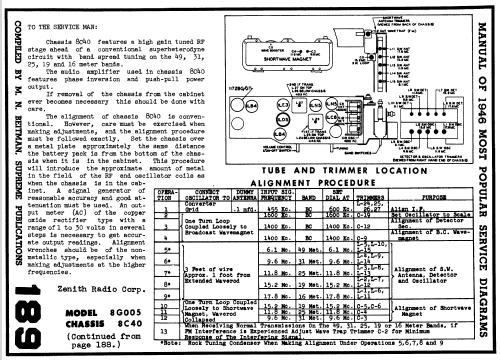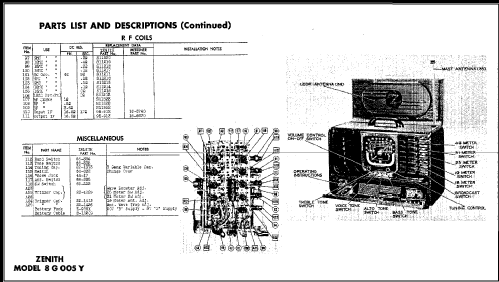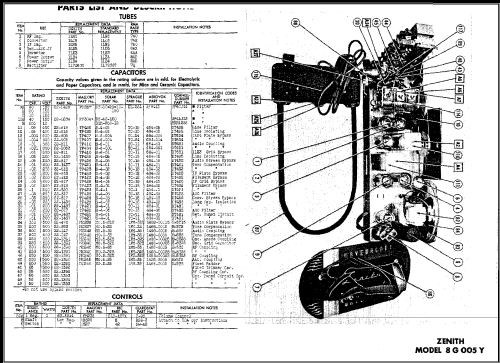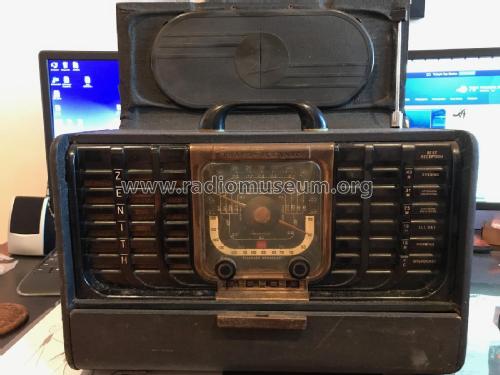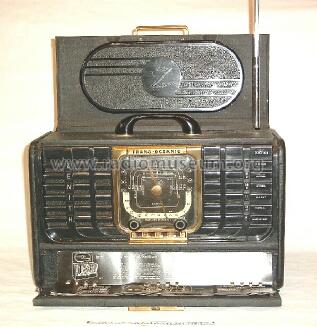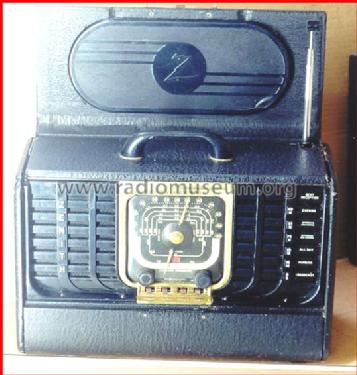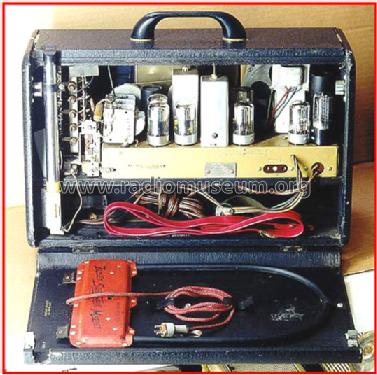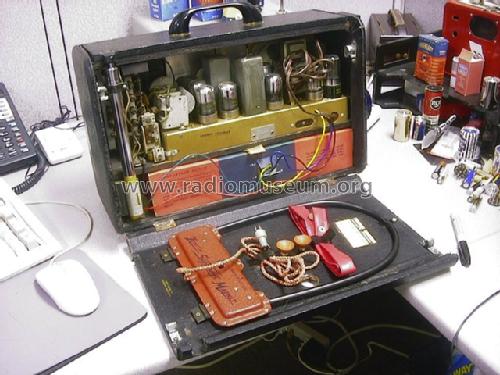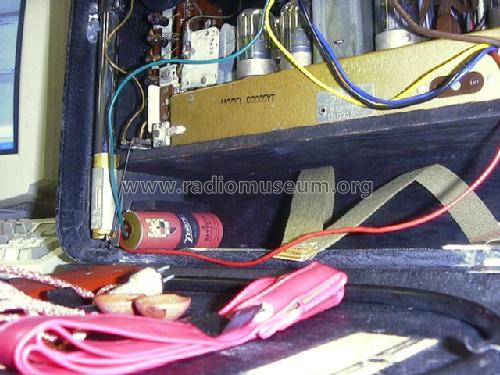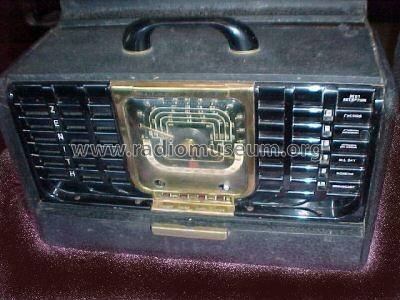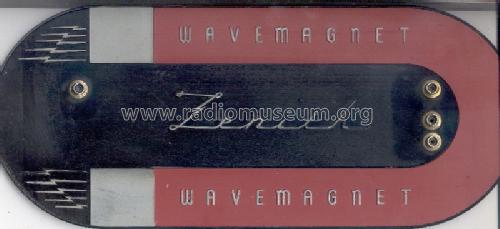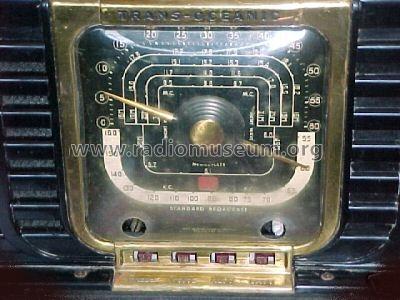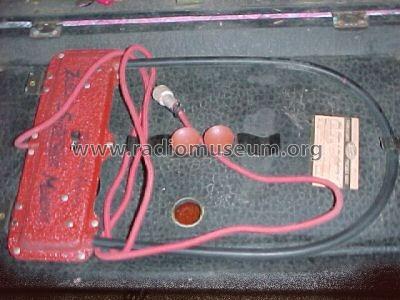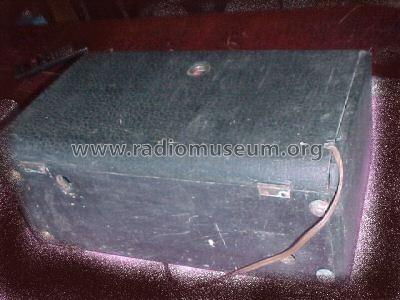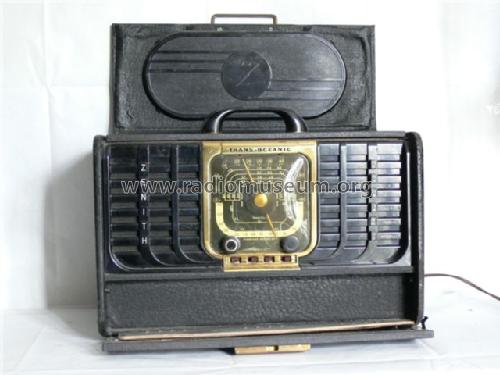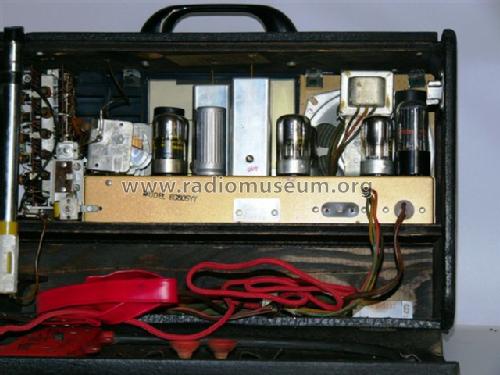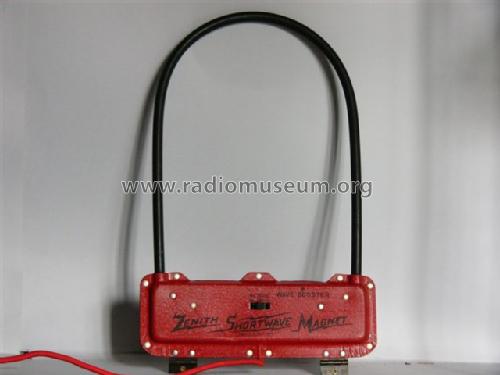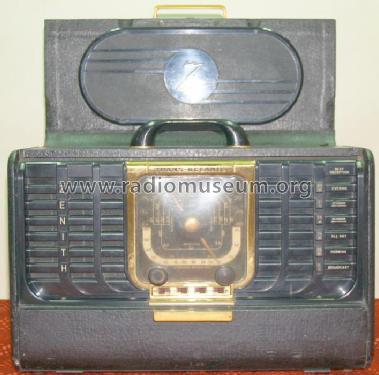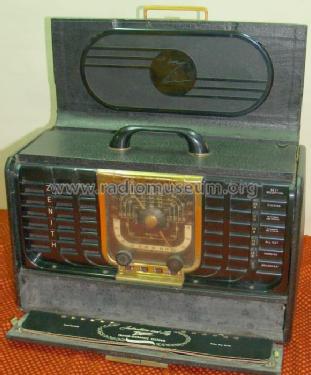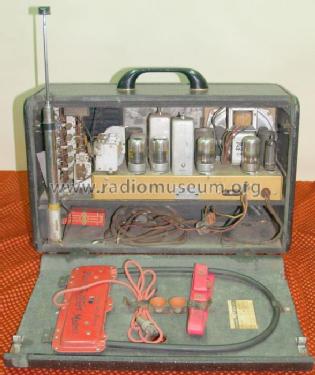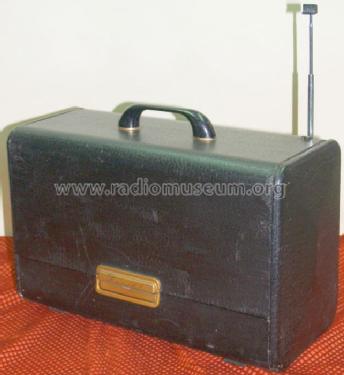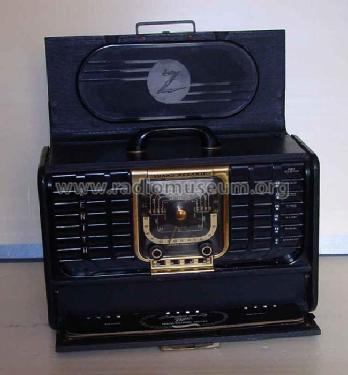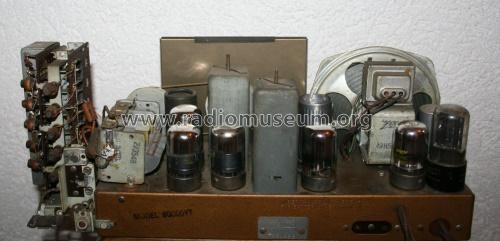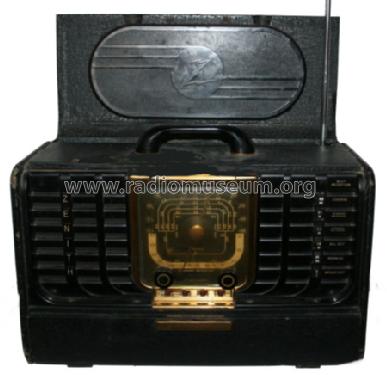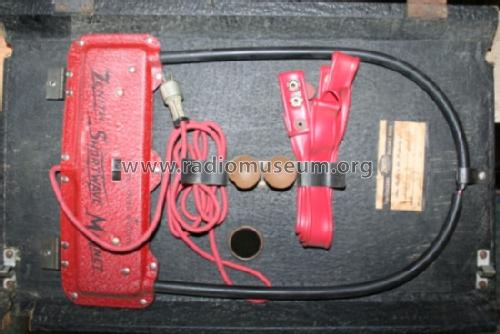Trans-Oceanic (TransOceanic) 8G005YT Ch= 8C40
Zenith Radio Corp.; Chicago, IL
- Land
- USA
- Hersteller / Marke
- Zenith Radio Corp.; Chicago, IL
- Jahr
- 1946/1947
- Kategorie
- Rundfunkempfänger (Radio - oder Tuner nach WW2)
- Radiomuseum.org ID
- 68077
-
- anderer Name: Chicago Radio Lab
Klicken Sie auf den Schaltplanausschnitt, um diesen kostenlos als Dokument anzufordern.
- Anzahl Röhren
- 8
- Hauptprinzip
- Super mit HF-Vorstufe; ZF/IF 455 kHz
- Wellenbereiche
- Mittelwelle und mehr als 2 x Kurzwelle.
- Betriebsart / Volt
- Netz- / Batteriespeisung
- Lautsprecher
- Dynamischer LS, keine Erregerspule (permanentdynamisch) / Ø 13.5 cm = 5.3 inch
- Material
- Leder / Stoff / Plastic / Segeltuch über div. Material
- von Radiomuseum.org
- Modell: Trans-Oceanic 8G005YT Ch= 8C40 - Zenith Radio Corp.; Chicago,
- Form
- Reisegerät > 20 cm (netzunabhängig betreibbar)
- Abmessungen (BHT)
- 430 x 280 x 200 mm / 16.9 x 11 x 7.9 inch
- Bemerkung
- See also the article here.
Siehe auch den Artikel hier.
Si veda anche questo articolo nel forum.
- Originalpreis
- 120.00 $
- Datenherkunft extern
- Ernst Erb
- Schaltungsnachweis
- Rider's Perpetual, Volume 15 = 1947 and before
- Literaturnachweis
- Bryant/Cones: The Zenith Trans-Oceanic
- Weitere Modelle
-
Hier finden Sie 4519 Modelle, davon 4111 mit Bildern und 3656 mit Schaltbildern.
Alle gelisteten Radios usw. von Zenith Radio Corp.; Chicago, IL
Sammlungen
Das Modell Trans-Oceanic (TransOceanic) 8G005YT befindet sich in den Sammlungen folgender Mitglieder.
- Hannu Alho (FIN)
- John Allen (CDN)
- Jürgen Bauch (D)
- Konrad Birkner † 12.08.2014 (D)
- Gary Brandenburger (USA)
- Angelo Daniele (I)
- Jorge Ferreira da Silva (P)
- Michael Gambuzza (USA)
- Mike Melzer (AUS)
- Tullio Milanese (I)
- Bill Morris (USA)
- Vitor Oliveira (P)
- Jean Claude Pigeon † 2008 (F)
- Rich Post (USA)
- Charles Sampayo (USA)
- Giuseppe Antonio Tusini (I)
Forumsbeiträge zum Modell: Zenith Radio Corp.;: Trans-Oceanic 8G005YT Ch= 8C40
Threads: 3 | Posts: 3
First of all: do not use the mains supply. You are going to risk tubes!
Be extremely careful.
Start with a regulated 9Volt DC Lab. Power supply with current limitation (50 mA) for the series filaments and follow by measurement tube by tube. The available schematic is good enough, since it only shows a different rectifier tube which You do not need now. The filaments are in the right order, and a current limitation will safeguard. If you would shortcut some of the tubes a battery might burn the other tubes. And the mains supply gives only the correct power if everything is to order.
Konrad Birkner † 12.08.2014, 12.Nov.06
Konrad Birkner † 12.08.2014, 30.Mar.04
Konrad Birkner † 12.08.2014, 23.Mar.04
